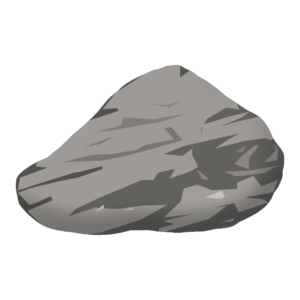The Downlink • Jun 24, 2022
Defend your planet
Space Snapshot

Finding an asteroid among a field of stars can be like looking for a needle in a haystack. But that’s exactly what asteroid hunters do, like Gary Hug who discovered the asteroid indicated on the right of this image. See the asteroid moving across the starfield in this gif. Image credit: Gary Hug.
Gary, like many asteroid hunters, made his discovery with the help of a Shoemaker NEO Grant from The Planetary Society. We work year-round to help observers find, track, and characterize near-Earth asteroids and comets, to support and advocate for the development of asteroid mitigation technologies, and to collaborate with decision-makers to develop international response strategies to defend Earth. You can help keep this work going. Donate to our planetary defense program today and do your part to defend our planet from impacts.
You love space, now take action
This weekly newsletter is your toolkit to learn more about space, share information with your friends and family, and take direct action to support exploration. Anyone can subscribe at planetary.org/connect to receive it as a weekly email.
Mission Briefings


The countdown is on: we’re officially less than 100 days away from DART’s impact. NASA’s Double Asteroid Redirection Test mission will be the first-ever test of an asteroid deflection technique. The impact, which is scheduled for September 26, will demonstrate whether the kinetic impactor method is a viable means of asteroid deflection should the need ever arise. Pictured: An artist’s impression of DART at the binary asteroid system where it will conduct its test. Image credit: NASA/JHUAPL/Steve Gribben.

China has ambitious plans for a Mars sample return mission. Sun Zezhou, chief designer of the Tianwen-1 Mars orbiter and rover mission, recently presented a new mission profile for China’s Mars sample return mission, which would launch in late 2028 and return samples of the Martian surface in July 2031. This would get samples back to Earth two years before NASA and ESA’s sample return missions.

NASA's Artemis 1 launch system has passed a crucial fueling test. The test involved running through everything up to a would-be launch, including fueling up Artemis 1's huge Space Launch System rocket with NASA's Orion capsule perched atop it, and performing a simulated countdown that took the vehicle and capsule through most of the steps they would have to successfully take leading up to engine ignition. There was a hydrogen leak during fueling, which would have caused an actual launch to be canceled. But this is why tests are valuable, since the team can now address the problem before moving on.
From The Planetary Society


These planetary defenders are saving the world one observation at a time. Our Shoemaker NEO grant program supports advanced amateur astronomers in their work to find, track, and characterize near-Earth objects (NEOs). Thanks to our members and supporters, over the 25-year history of the program, we have awarded approximately $515,000 to 70 winners in 21 countries on six continents. Catch up on what the latest winners have been working on, and make your own contribution to help defend Earth today. Pictured: Members of the Shoemaker-grant-winning team Gruppo Astrofili Montelupo in Italy. Image credit: Gruppo Astrofili Montelupo.

Help get a critical asteroid-hunting mission off the ground. NASA’s NEO Surveyor space telescope would orbit between Earth and the Sun looking for near-Earth asteroids big enough to destroy a city. NASA’s latest budget would cut $130 million from the mission, a reduction that would seriously delay and disrupt this essential planetary defense mission. If you live in the United States, we urge you to contact Congress using this form to advocate in support of a mission that could really make a difference in the effort to defend Earth. If you live elsewhere, you can help by donating to our planetary defense program.

Asteroids aren’t all doom and gloom. They’re also fascinating miniature worlds unto themselves, and studying them can teach us a lot about the Solar System and our place in it. That’s why Asteroid Day is a celebration of both the study of asteroids and the efforts to defend Earth from their impacts. The Planetary Society is proud to be a partner for this exciting, international series of in-person and virtual events, taking place on June 30.
What's Up

The visible planets (Mercury, Venus, Mars, Jupiter, and Saturn) are all visible in the pre-dawn sky, lined up from the horizon in that order. The Moon is making its way past the lineup, getting lower to the horizon each night. Find out more about what’s in the night sky this month.
Wow of the Week

It’s easier to love an ancient impact crater than a potential one. What you see here is a radar image of Aorounga crater in the Sahara Desert of northern Chad, thought to have formed from one of a chain of meteor impacts around 345 million years ago. The crater is 12.6 kilometers (7.8 miles) in diameter, making it one of the largest exposed craters on Earth. Image credit: NASA.
Send us your artwork!
We love to feature space artwork in the Downlink. If you create any kind of space-related art, we invite you to send it to us by replying to any Downlink email or writing to [email protected]. Please let us know in your email if you’re a Planetary Society member!


 Explore Worlds
Explore Worlds Find Life
Find Life Defend Earth
Defend Earth


